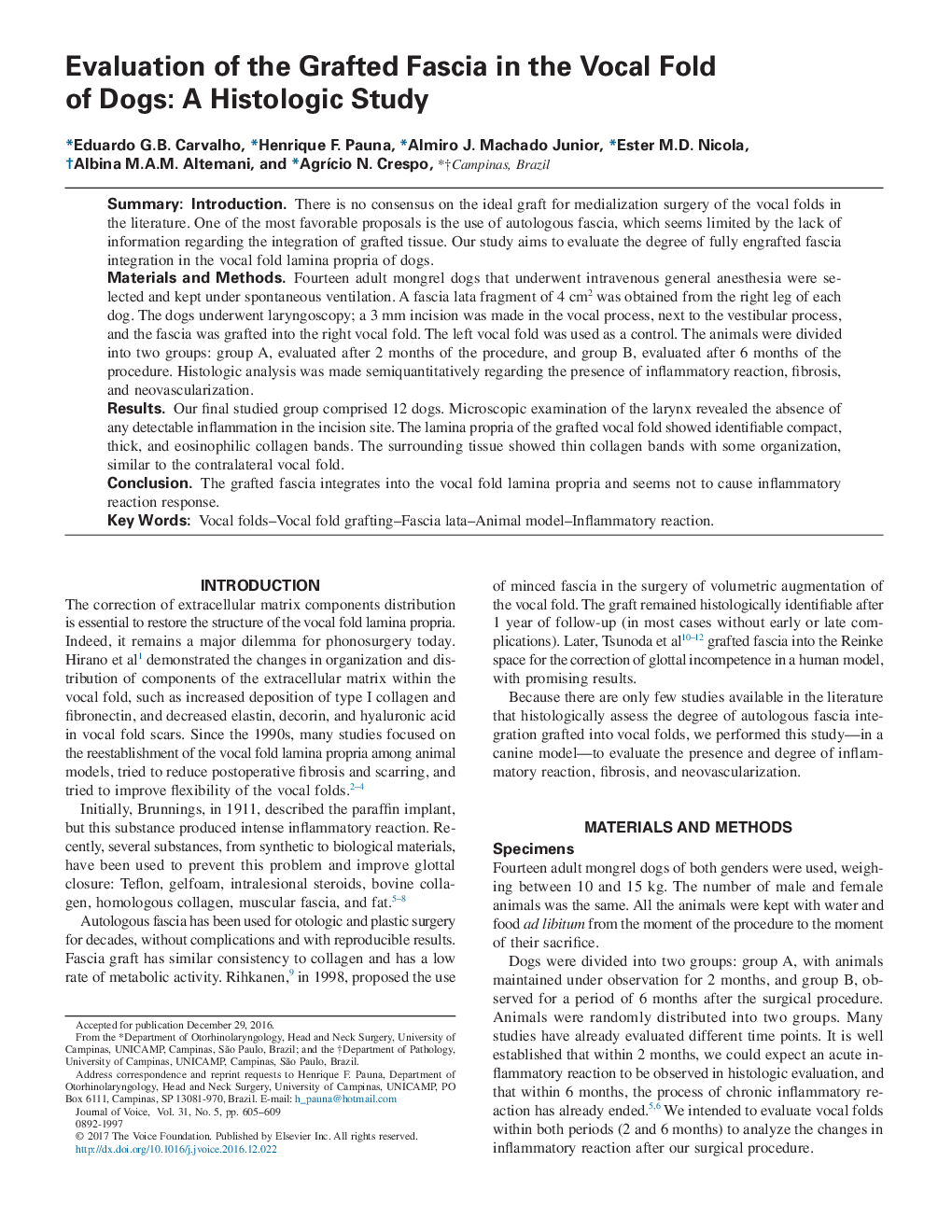| کد مقاله | کد نشریه | سال انتشار | مقاله انگلیسی | نسخه تمام متن |
|---|---|---|---|---|
| 5124138 | 1488124 | 2017 | 5 صفحه PDF | دانلود رایگان |

SummaryIntroductionThere is no consensus on the ideal graft for medialization surgery of the vocal folds in the literature. One of the most favorable proposals is the use of autologous fascia, which seems limited by the lack of information regarding the integration of grafted tissue. Our study aims to evaluate the degree of fully engrafted fascia integration in the vocal fold lamina propria of dogs.Materials and MethodsFourteen adult mongrel dogs that underwent intravenous general anesthesia were selected and kept under spontaneous ventilation. A fascia lata fragment of 4âcm2 was obtained from the right leg of each dog. The dogs underwent laryngoscopy; a 3âmm incision was made in the vocal process, next to the vestibular process, and the fascia was grafted into the right vocal fold. The left vocal fold was used as a control. The animals were divided into two groups: group A, evaluated after 2 months of the procedure, and group B, evaluated after 6 months of the procedure. Histologic analysis was made semiquantitatively regarding the presence of inflammatory reaction, fibrosis, and neovascularization.ResultsOur final studied group comprised 12 dogs. Microscopic examination of the larynx revealed the absence of any detectable inflammation in the incision site. The lamina propria of the grafted vocal fold showed identifiable compact, thick, and eosinophilic collagen bands. The surrounding tissue showed thin collagen bands with some organization, similar to the contralateral vocal fold.ConclusionThe grafted fascia integrates into the vocal fold lamina propria and seems not to cause inflammatory reaction response.
Journal: Journal of Voice - Volume 31, Issue 5, September 2017, Pages 605-609